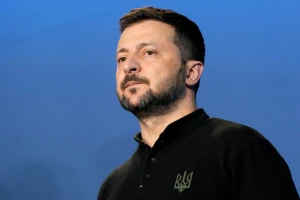
Drone war: why Ukraine needs its own production of drones and anti-drone systems
At the beginning of the 21st century, unmanned aerial vehicles (drones) increasingly enter the theatre of military operations. Whoever is the first to organise massive, cheap production of attack drones, will have an advantage on the battlefield
Historically, every major war or armed conflict brings new types of weapons to humanity, writes Ukrainian volunteer Olena Shevtsova in her opinion piece for censor.net.
In World War I, it became clear that the future belonged to tanks and aircraft. The theatres of World War II were dominated by aircraft carriers and rocket artillery, and in 1945, humanity saw the unprecedented power of nuclear weapons. During the conflicts of the second half of the 20th century, jet aircraft were actively used. At the beginning of the 21st century, unmanned aerial vehicles (drones) increasingly entered the battlefield.
The aggression of the Russian Federation against Ukraine has caused one of the largest military conflicts since World War II. This war has already been called the war of drones. It is now clear that the importance of drones will only grow over time, and it is very important for us not to lose the time and moment. After all, whoever is the first to organise massive, cheap production of attack drones will have an advantage on the battlefield.
The Ukrainian military describes the current balance of power on the battlefield in terms of the use of drones parity. In some ways, we are better, in others, they are better. We are most concerned about the situation with Shaheds and Lancets. Shaheds target our infrastructure and military facilities, while the Lancets attack Ukrainian equipment and personnel. These drones can be called cheap to produce compared to the damage they can do. Iran has established cheap production of Shaheds, which the Russians now want to copy in Tatarstan. And this is a very worrying signal.
We are already learning how to counter these ‘kamikaze’ drones by shooting them down with conventional Soviet anti-aircraft guns. After all, it is extremely unprofitable to use expensive air defence systems against the Shahed. The aid package from the United States, which was allocated on April 4, contains a rather unusual type of weapon, which the US called a 30-mm gun truck. This is a system armed with a 30-mm automatic cannon designed specifically to combat ‘kamikaze’ drones and will be mounted on trucks. So far, the US has ordered only nine of these systems for Ukraine. And it is likely that further increases in their number will depend on the effectiveness they demonstrate in real-world conditions. An alternative system is currently being considered - a system with guided small-calibre missiles (upgraded Hydra MLRS) - APKWS; 10 additional such systems are also included in the new US aid package.
But it is not just armoured vehicles and missiles that can be used against Shaheds. Active work is underway to develop drones that will be able to destroy the Shahed drones. Ukrainian developers presented a project of such a high-speed drone back in December last year. It is a simple copter that can lift up to 16 kg and, in a real battle, can deliver ammunition weighing up to 2 kg over a distance of 20 km. In February of this year, another group of Ukrainian engineers announced the completion of the Spire drone, which, according to the developers, is also capable of intercepting Iranian Shahed ‘kamikaze’ drones. The question is which of our developers will be the first to successfully complete the tests and establish production of such drones, certainly not without government assistance.
As for the Lancets that have been disturbing our fighters, anti-drone nets and early warning systems have so far been the most effective. It should be noted that the Russian forces use this type of drone more actively than we do. An analysis of the wreckage of one of the Lancet-type Russian ‘kamikaze’ drones showed that Russian forces use chips from children's toys and vape batteries to produce such UAVs. This suggests only one thing - Russian occupiers are trying to establish mass and cheap production of these drones. And this is where we have to respond.
So far, Ukraine is moving in the right direction. The state programme "Army of Drones", for example, provides for the supply of hundreds of thousands of UAVs to Ukrainian soldiers. For example, over the past 24 hours alone, more than 500 drones and optoelectronic systems purchased through the United24 fundraising platform have been handed over to the Ukrainian military. As we all know, the same relatively cheap Mavic drones have already become an integral part of the arsenal of Ukrainian soldiers. However, there are some problems here too. The drones are manufactured by China, which currently has not the best relations with our main strategic partner, the United States.
Therefore, in order to be less dependent on external factors, our Ukrainian drone production is an important area. At the end of May, a large-scale meeting of FPV drone manufacturers with representatives of flight schools, local authorities and the military took place in Lviv. More than 30 Ukrainian developers presented their products at the Furious Birds conference. FPV drones are drones that transmit real-time video and have the ability to drop explosives on the enemy or operate as a ‘kamikaze’ drone. These drones, which cost several thousand dollars, easily destroy enemy equipment worth tens and hundreds of millions, and most importantly, save the lives of our guys.
We, the volunteers, are convinced that mass production of such drones will help Ukraine to win, and it is great that the new faces in the Ministry of Defence support us in this.
About author: Olena Shevtsova, volunteer
- News














































